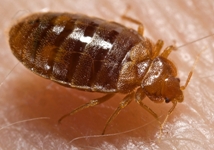Entomologists at the University of Kentucky College of Agriculture, USA found the majority of bedbugs in the United States appear to have developed genetic mutations, making them resistant to the most commonly used pyrethroid insecticides.
While there are many different types of pyrethroids, University of Kentucky researchers, led by Dr Mike Potter, have found once a bug is resistant to one, they are likely resistant to others in the same category.
|
Their study analyzed 110 bedbug populations from across the United States and found 88% of them had one or two genetic mutations. These mutations produce what is known as knockdown resistance, meaning the insecticide is not able to kill bedbugs. “This study shows how widespread the problem is. It really brings home that this isn”t just an isolated incident,” said Reddy Palli, one of the researchers. Scientists in other countries have also found pyrethroid resistance in bedbugs on a smaller scale, so the resistance could be worldwide. |
|
|
|
By way of explanation, Mike Potter said: “One of the reasons for the resistance could be that the bedbugs were previously exposed to pyrethroids before coming to the United States. Pyrethroids are used to combat many different insects and are used in mosquito bed nets to combat malaria.” Another possibility is the bugs developed resistance in the 1940s and 1950s when DDT was used for bedbug defense. Bugs that are resistant to DDT have the same target-site resistance as pyrethroids. Currently, no insecticide or non-chemical practice alone is 100% effective in eliminating bedbugs. From a British perspective, Clive Boase of the Pest Management Consultancy explained: “This work from Mike Potter”s team at the University of Kentucky moves our understanding of the bedbug problem on a little further. It shows that a kdr-type gene is present in 88% of USA bedbug populations examined. This gene is well studied, and is found in many other pyrethroid resistant pests of public health and agricultural importance. It affects the site of action of pyrethroids, so is effective against all pyrethroids, and also is unaffected by synergists such as PBO.” “Here in Europe,” Clive continued, “we already know that pyrethroid resistance is widespread, and the same kdr-type gene may well be involved. In terms of practical bedbug control with insecticides in the UK, use of pyrethroids alone is unlikely to be seen as good practice. Nonetheless as part of a sequence of treatments involving other insecticide classes, and which maximises direct contact with the insects, and which of course is preceded by careful inspection and room preparation, for now they still seem to have a role to play.” “We need alternative insecticides to fight this bug,” Potter said, “Unfortunately today”s products are not as effective as ones we had previously. Non-chemical measures are important but are seldom completely effective and can be laborious and expensive. History has taught us insecticides are a crucial part of the bed bug solution.” The full release from the University of Kentucky can be seen by clicking here. |
||


